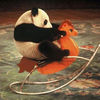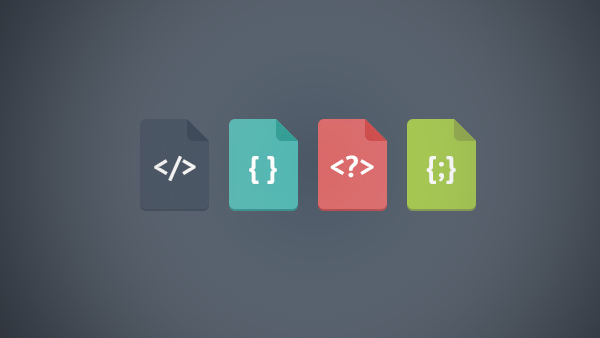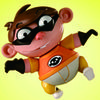hallo,everyone,我又来了,第3篇内容主要讲述坦克大战开始菜单的设计和事件绑定。
惯例,先上HTML内容和最终效果

<div class="setting" id="setting">//菜单包裹层
<div class="mubu" id="mubu1"></div>
<div class="mubu" id="mubu2"></div>//幕布,分为上幕和下幕,开幕的时候从中间开始分别卷起上下幕;
<div class="start" id="start">//开始菜单,4个按钮div
<div class="btn">开始游戏</div>
<div class="btn">游戏说明</div>
<div class="btn">选择关卡</div>
<div class="btn">定义地图</div>
</div>
<div class="start" id="shuoming">//游戏说明div
<ul class="ul_shuoming">
<li>W:向上</li>
<li>S:向下</li>
<li>A:向左</li>
<li>D:向右</li>
<li>J:开炮/选择地图种类</li>
<li>Esc:返回主菜单/取消定义地图</li>
<li>Enter:完成定义地图</li>
</ul>
<div class="btn">返回</div>//里面有一个返回按钮div
</div>
<div class="start" id="chooselevel">//选择关卡按钮,里面有4个按钮
<div class="btn">关卡一</div>
<div class="btn">关卡二</div>
<div class="btn">关卡三</div>
<div class="btn">关卡四</div>
</div>
</div>
.start{ width:250px; height:400px; background:#333; border:3px #9F0 outset; position:absolute; top:100px; left:300px; border-radius:10px;z-index:50;}
#shuoming,#chooselevel{left:560px; opacity:0; display:none;}来看这一段样式,#shuoming和#chooselevel属于次级菜单,他们与一级菜单的区别在于,定位于一次菜单的右面,并且是隐藏的,只有点击事件出现后,次级菜单才会出现。1 为“开始游戏”按钮绑定事件
//注意这里的这个选择器,更好的方式应该是$('#start .btn').eq(0),刚做的时候学艺不精;
$('#start').find('.btn').eq(0).bind('click',function(){//选中开始游戏按钮,绑定单击事件
$('#start').animate({top:0,opacity:0},500,function (){//给主菜单添加动画,500ms完成隐藏和移动
addposition();//还记得这个函数吗,这里的作用应该是格式化地图格子的位置
$(this).css('display','none');//主菜单动画完成后,将其display为none,因为如果只是单纯的透明度为0,实际上这个菜单里的按钮还是可以点击的。
setTimeout(slideupmubu,500);//延迟500ms开幕
setTimeout(startwar,500);//延迟500ms开始游戏,这里的startwar()是一个自定义函数,用来给坦克绑定事件,下节再给大家讲。
});
});2 为“游戏说明”按钮绑定事件,游戏说明菜单“返回”按钮绑定事件
$('#start').find('.btn').eq(1).bind('click',function(){
$('#start').animate({left:50,opacity:0},500,function (){//主菜单动画,500ms内完成移动和隐藏
$(this).css('display','none');//动画完成后,将主菜单display:none;
$('#shuoming').css('display','block');//将二级菜单dispaly:block;
$('#shuoming').animate({left:300,opacity:1},500);//二级菜单动画,500ms内完成移动和显示;
});
});
$('#shuoming').find('.btn').bind('click',function(){//次级菜单游戏说明的返回按钮事件
$('#shuoming').animate({left:560,opacity:0},500,function (){
$(this).css('display','none');
$('#start').css('display','block');
$('#start').animate({left:300,opacity:1},500);
});
});3 为“选择关卡”按钮绑定事件,选择关卡菜单“关卡X”按钮绑定事件
$('#start').find('.btn').eq(2).bind('click',function(){//这个事件也不解释了,实际上应该定义成一个通用函数的,方便直接调用。
$('#start').animate({left:50,opacity:0},500,function (){
$(this).css('display','none');
$('#chooselevel').css('display','block');
$('#chooselevel').animate({left:300,opacity:1},500);
});
});
$('#chooselevel').find('.btn').each(function(index, element) {//遍历4个关卡按钮
$(this).bind('click',function(){//为每个按钮添加点击事件;
pastemap(mapdata[index]);//布置对应关卡的地图,我事先制作了4个关卡的数据,储存在mapdata数组中;
$('#chooselevel').animate({left:560,opacity:0},500,function (){//布置完关卡后,直接返回一级菜单;
$(this).css('display','none');
$('#start').css('display','block');
$('#start').animate({left:300,opacity:1},500);
});
});
}); 上节,我们已经为“定义地图”绑定过事件了,这里就不啰嗦了。前文中,有几个函数,下面我们来定义一下
1. clearmap(),清除地图的各种地图块的class
function clearmap(){//清除地图上的所有东西,并布置老家
$('.map_i').each(function(index, element) {//遍历所有地图小块
$(this).attr('class','map_i')//初始化class为最初的map_i,这样原来的砖墙河流等就会没有了;
});
buzhilaojia();//为老家加上不可穿越的属性,还记得吗,给class里加一个zhuan_qiang关键字;
}2. slidedownmubu()/slideupmubu(),开幕闭幕

function slideupmubu(){//开幕脚本
$('#mubu1').animate({height:0},2000,'linear');//上幕布向上卷起,匀速
$('#mubu2').animate({height:0,top:600},2000,'linear');///下幕布向下卷起,匀速
}
function slidedownmubu(){//幕布脚本
$('#mubu1').animate({height:300},2000,'linear');
$('#mubu2').animate({height:300,top:300},2000,'linear');
$('#start').css('display','block').delay(2100).animate({top:100,opacity:1},500);//闭幕完成后,还要将开始菜单显现;
}3. copymapdata(),该函数可以获取定义好的地图格子的种类,返回数组
function copymapdata(){//获取自定义地图数据
var $mapdata=[];//初始化数组;
$('.map_i').each(function(index, element) {//遍历所有地图格子
$mapdata.push(getclass(index));//将每个地图格子的地图类型push入数组,这里的getclass(index)在前面已经讲过了,会根据不同的class返回不同的值。
});
return $mapdata;//返回数组
}4. pastemap(data),传入一个储存地图数据的数组,根据数据布置地图
function pastemap(data){//将data数据布置成地图
clearmap();//格式化地图
for(var i=0;i<data.length;i++){//遍历数组
switch(data[i]){//根据不同的值,为每个地图格子添加不同的样式
case 1:$('.map_i').eq(i).addClass('zhuan_qiang');break;
case 2:$('.map_i').eq(i).addClass('tie_qiang');break;
case 3:$('.map_i').eq(i).addClass('riverqiang');break;
case 4:$('.map_i').eq(i).addClass('caodi');break;
}
}
}`5. startwar(),真正的开始游戏脚本
function startwar(){//开始游戏脚本
$(document).unbind('keydown').unbind('keyup');//初始化键盘按键事件
clearTimeout(timer);//如果光标闪烁,停止编辑地图中的光标闪烁
$('#bianji').css('display','none'); //退出编辑模式,将光标隐藏
$('#yyf').attr('style','').css('display','block');//显示男主角坦克
$(document).bind('keydown',function(event){//绑定键盘按键事件
if(event.which==65)tankermove('#yyf',3);//A坦克向左移动
if(event.which==87) tankermove('#yyf',1);//W坦克向上移动
if(event.which==83) tankermove('#yyf',2);//S坦克向下移动
if(event.which==68) tankermove('#yyf',4);//D坦克向右移动
if(event.which==74) shot('#yyf');//J 男主角坦克开炮
if(event.which==27) {//ESC退出游戏
slidedownmubu();//闭幕
$(this).unbind('keydown').unbind('keyup');//初始化键盘按键事件
setTimeout(clearmap,2150);//格式化地图
setTimeout('pastemap(mapdata[0])',2150);//退出后,重新布置关卡1
}
});
$(document).bind('keyup',function(event){//绑定松开移动按键后,坦克立即停止移动的事件
if(event.which==65)$('#yyf').stop(true,false);
else if(event.which==87)$('#yyf').stop(true,false);
else if(event.which==83) $('#yyf').stop(true,false);
else if(event.which==68)$('#yyf').stop(true,false);
movet();//坦克停止移动后,做一个位置的小调整
});
}到这里,开始菜单的各按钮事件绑定就完成了。本篇内容也到此结束。
其中,startwar()里有几个重头函数,将是以后的章节中要介绍的主要内容。
其中,tankermove(tankerid,n)是坦克的移动函数;
shot(tankerid)是坦克的开炮函数;
movet()是一个移动结束后位置的调整函数,可以让坦克停止移动后其位置是一个整数,不然位置是小数不利于坦克移动,比如你永远也穿不过一个宽度和坦克宽度一样的通道。











 随时随地看视频
随时随地看视频




热门评论
-

慕粉183630301952016-07-07 0
查看全部评论挺好玩的 能不能做影子传说